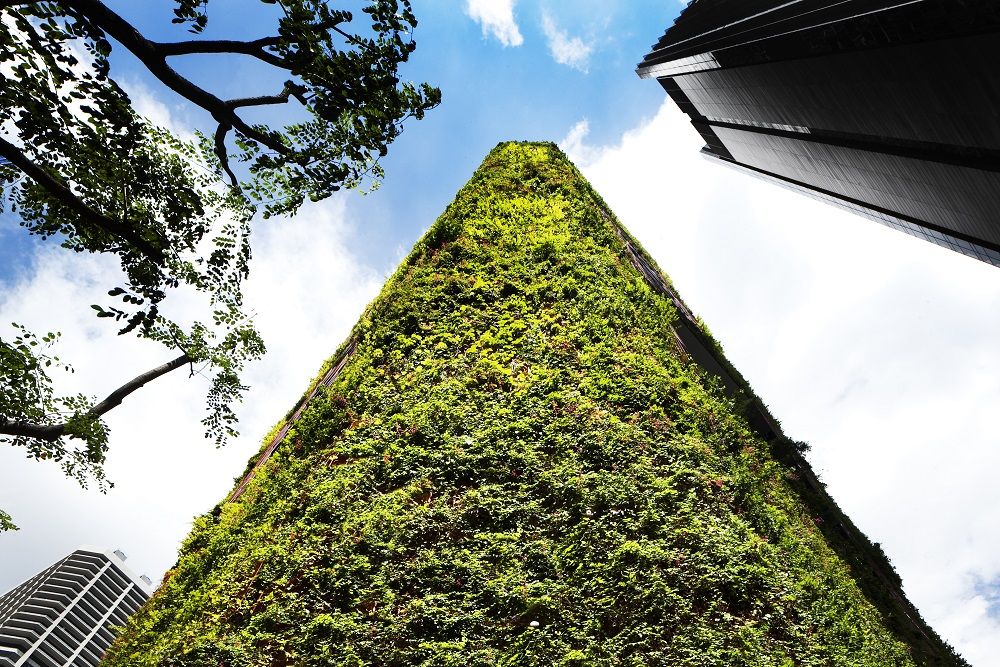Pretty green: Singapore reaps what it sows

If Beijing is battling for cleaner air to safeguard its economic future, the city likely learned a lot from Singapore. As Jason Pomeroy, of Singapore-based architects Pomeroy Studio, points out: “Singapore has no natural resources, so it’s always had to develop quickly and embrace new ideas to sustain itself. Today, it’s a global powerhouse that’s committed to the green agenda — not to be trendy, but for its own survival.” The same ought to be true of every other city in the world.
Singapore is indeed a leader in greening the built environment: beginning with modern Singapore’s founding father, Lee Kuan Yew, and his vision for a “Garden City”. In Lee’s memoir, From Third World to First: 1965-2000, he wrote: “After independence, I searched for some dramatic way to distinguish ourselves from the other Third World countries. I settled for a clean and green Singapore.” His hunch paid off. Today, the government offers generous incentives for green design — and not just because it lends a competitive edge in terms of liveability (the Lion City was named Asia’s most liveable in the Economist Intelligence Unit rankings last year). Clean energy and environmental technologies are also nascent engines of economic growth.
“The essence of sustainable design is going back to basics. It’s optimising natural light, natural ventilation, using materials that are local and available — not tokenistic greenwashing gestures”
In the CBD, Oasia Hotel stands like an emblem of a better future. Between great obelisks of steel and glass, its crimson, aluminium mesh facade is tangled with 60 stories of tropical plants, green walls stretching jungle-like into the air. Far from a sealed-in box, there are sky gardens dotted throughout the structure, creating an open building where natural breezes, rather than air-conditioning, provide ventilation. Oasia was named the Council of Tall Buildings and Urban Habitat’s tall building of the year in 2017, though the practice behind it has grander ambitions. Hongwei Phua, director at WOHA Architects, explains: “Oasia is our proposal for a sustainable high-rise model for the hot and humid tropical climate. The design strategies are replicable and scalable in urban planning and buildings.”
Another pitch for greener dwellings: Pomeroy Studio’s carbon-negative house. The bungalow, in residential Bukit Timah, generates more energy than it uses, and the design is modular, so it can be manufactured off-site (reducing wasteful off-cuts). More than anything, though, Pomeroy says, he wants to “dispel the notion that sustainable design is expensive”.
“The essence of sustainable design is going back to basics,” the architect explains. “It’s optimising natural light, natural ventilation, using materials that are local and available — not tokenistic greenwashing gestures, which simply add cost to what is effectively a conventional building.”
The carbon-negative house instead takes inspiration from colonial-era design: large verandas and courtyards for outdoor living; variable shutters and strategically-positioned windows that keep the sun out, but allow airflow in. It costs the same to build as a conventional home, Pomeroy states: “And who wouldn’t want to buy a home where their capital expenditure is the same, but their future operating costs are greatly reduced?”
More: Singapore property market still a picture of stability
Low-tech green design includes the greenery itself: capturing excess water, removing pollutants from the atmosphere, absorbing noise levels, and lowering temperatures through transpiration (the United States Department of Agriculture, for example, estimates properly placed plants could decrease air temperature in an office by 10 degrees).
For this reason, together with Singapore’s big-ticket developments — like the lush terraces at luxury hotel Parkroyal on Pickering; or the solar-power-generating, vertical gardens of Marina Bay’s Supertree Grove — public housing is just as verdant. See The Pinnacle @ Duxton, with its high-level green spaces and gardens. Attractive communal spaces, too, are an integral part of Singapore’s public housing, a concerted effort to create happy, healthy, connected communities.
This article originally appeared as one in a four-part series in Issue No. 149 of PropertyGuru Property Report Magazine
Recommended
Why everyone is moving to Selangor and Johor: Malaysia’s real estate comeback
Malaysia’s upturn in fortunes is especially prevalent in secondary destinations such as Selangor and Johor
Penang’s silicon boom: How the US-China tech war is supercharging local real estate
Penang’s booming semiconductor industry has created ripples within the local real estate sector
New leader, new opportunities: How Hun Manet is shaking up Cambodia’s real estate game
Hun Manet is overseeing decent economic growth and widening access to the country’s real estate market for foreigners
Singapore embraces inclusive housing reforms amid resilient demand
The Lion City’s regulatory strength continues to exert appeal for international investors








